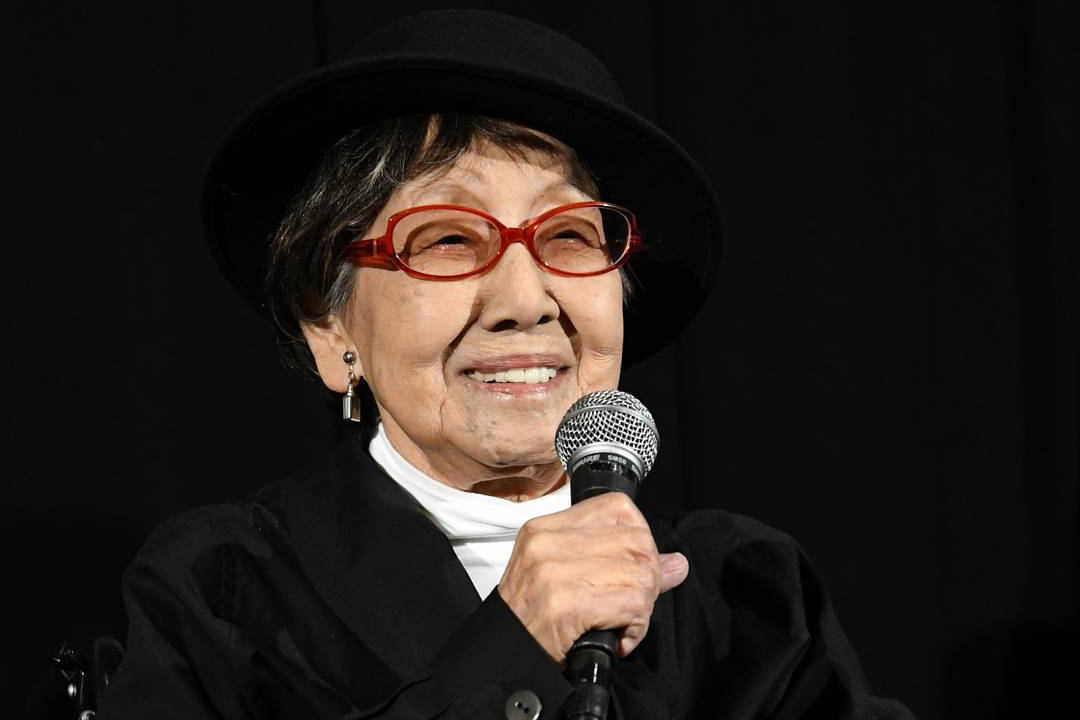News
Tsuneko Sasamoto (1914–2022)


On August 15, Tsuneko Sasamoto, Japan’s first female photojournalist, died of natural causes at the age of 107 in Kamakura, south of Tokyo. Her photography captured the voices of the poor and powerless in Japan’s Showa era, from the Second Sino-Japanese War and World War II to postwar Japan, including the American occupation of Japan, Hiroshima in its recovery from the atomic bombings, and the Anpo protests in the late 1950s.
Sasamoto was born in 1914, the year when the First World War began. She studied illustration and pattern design in school. Initially she wanted to become a painter, but was objected by her father, who ran a traditional kimono shop at the time. Working as a part-time illustrator at the Tokyo Nichi Nichi Shimbun (now Mainichi Shimbun, one of the major newspapers in Japan), she became more in touch with photojournalism. Through family connection, Sasamoto interviewed then-head of the Japan Photo Library, Kenichi Hayashi, by chance. During the interview, Hayashi told her about female American photographer Margaret Bourke-White, whose work was prominently featured on Life magazine, the first all-photographic American news magazine. She was asked if she would want to be Japan’s first female photojournalist. The conversation led to her decision of becoming a photographer, despite being fearful of the disapproval from her parents and her lack of experience in photography.
At the age of 26, Sasamoto became a freelance photojournalist working for press and agencies, and joined the Photography Association in 1940, which was established by Japan’s Cabinet Intelligence Bureau in 1938. While learning photography skills through her job, as a woman Sasamoto was required to wear skirts and high heels, which restricted her when capturing WWII at the front line. During the war, she was mostly assigned to take portraits of diplomatic envoys, but she also photographed important historical events, including the Women’s Celebration of the tripartite pact in 1940, Hitler Youth’s arrival in Japan, and the eve before the war broke out between Japan and the United States. At the time, while Sasamoto felt that her works were not often acknowledged by people in the field, the camaraderie among photographers gave way to her male colleagues lending her a spare flashbulb or flim when needed.
Sasamoto’s photos appeared in the Shashin Shuho, a weekly publication circulated by the Cabinet Intelligence Bureau from 1938 to 1945. Shortly after the end of the war, in 1947, she took portraits of General Douglas MacArthur and his wife, Jean, who were in charge of the US’s occupation in Japan. In 1950, she co-founded the Japan Professional Photographers Society, of which she was an honorary member until 2011. Her other subjects included the Hiroshima Peace Memorial in 1953; artists and critics such as Taro Okamoto and Soichi Oya; and common people such as the wives of the coal miners on strike. In 1959, she documented the Anpo protests, which took place against the US-Japan Secuity Treaty that allows the US to keep their military bases in Japan.
Following the Anpo protests, a lot of the magazines were terminated and Sasamoto stopped working as a photojournalist. She opened a tailor shop in 1962 and worked as a fashion consultant for three years until she closed the shop. Then she learned to make Western-styled bouquets and corsages, and became a florist and a lecturer on floral design for ten years. After an exhibition in 1985 at the age of 71, she picked up her camera again and started taking portraits of women creatives who were born in the Meiji era, including author Chiyo Uno, yoga painter Migishi Setsuko, and actress Haruko Sugimura. The series, which aimed to rediscover and celebrate the strength of women professionals, later became her most well-known project.
She published two photo books in her lifetime, Hyakusai no Finder (Centenarian’s Finder) (2011) and Inquisitive Girl at 101 (2015). In celebration of her 100th birthday in 2014, Sasamoto held two solo exhibitions, “Tsuneko Sasamoto 100 Years Old Exhibition” and “100 Women,” which received a lot of attention. Her passion in photography continued even after she broke her left hand and both legs in a fall in 2014.
In 2011, she won the Yoshikawa Eiji Cultural Award and the Photographic Society of Japan Award, which recognized her contribution to photojournalism in the country, and a lifetime achievement award from the internationally acclaimed Lucie Award for photography in 2016. In 2021, she was featured in “The New Woman Behind the Camera,” a survey of women photographers who shaped photography as an artistic medium in the early 20th century at New York’s Metropolitan Museum of Art.
Beata Li is ArtAsiaPacific’s editorial intern.







